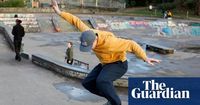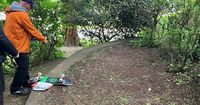In the heart of Glasgow’s Kelvingrove Park, a long-buried chapter of Scottish sporting history is about to be unearthed. From August 25 to August 29, 2025, archaeologists from the University of Glasgow, joined by students, volunteers, and even former park users, will excavate the site of Kelvin Wheelies—Scotland’s first skatepark, now considered “lost in time.” This unique dig aims not only to reveal the concrete remains of a pioneering facility but also to revive memories and preserve a central part of modern Glasgow’s sporting heritage.
Kelvin Wheelies opened in May 1978, at a time when skateboarding was exploding in popularity across the UK and beyond. Glasgow City Council invested £100,000—a significant sum in the late seventies—to build a state-of-the-art park featuring bowls, a slalom run, and a half-pipe (or “hauf-pipe,” as locals fondly called it). The design was radical for its day, drawing skaters from all over the UK and quickly cementing Glasgow’s reputation as a skateboarding hub.
The park’s impact was immediate and profound. According to Glasgow Live, Kelvin Wheelies hosted Scotland’s first national skateboarding competition, the 1978 Scottish Skateboard Championships, where Glasgow’s skaters dominated the Bowl Riding events. Jamie Blair, owner of Clan Skates and a former Scottish skateboard champion, remembers the park’s heyday vividly: “When Kelvin Wheelies opened in 1978, skaters from all over the UK flocked to this radical new facility. A park team was formed, and for the next few years Glasgow was the dominant force in Scottish skateboarding.”
But the glory days were short-lived. By the early 1980s, skateboarding’s popularity dipped, and concerns about maintenance costs and safety began to mount. The construction of a rival skatepark in Livingston further eroded Kelvin Wheelies’ user base. By 1983, the park was closed and literally buried, leaving only faint traces of its original layout near the modern skatepark in Kelvingrove Park. Today, a few top sections of concrete peek out from beneath overgrown trees and shrubs, with little to explain their cultural significance to passersby.
“There is a very real danger that this skatepark, a place that was so special for hundreds of young people just decades ago, will become forgotten and lost,” said Dr Kenny Brophy FSAScot, Senior Lecturer in Archaeology at the University of Glasgow and the project’s leader. “Contemporary archaeology allows us the opportunity to explore even fairly recent events and places to jog memories, combining traditional archaeological fieldwork techniques with interviews and documentary research. In the case of Kelvin Wheelies, this is a unique opportunity for a generation of skateboarders to relive the excitement of their youth and excavate their own memories of a place that was so special to them.”
The upcoming excavation is supported by a £1,102 grant from the Society of Antiquaries of Scotland, part of a wider £17,478 distributed to eleven projects exploring Scottish history and archaeology this year. Dr Helen Spencer FSAScot, head of research at the Society, highlighted the importance of such community-focused initiatives: “As a charity, we are especially grateful to our thousands of Fellows across the globe, whose subscription fees enable us to distribute these grants each year.” She encouraged anyone interested in Scotland’s past to consider applying for Fellowship or future grants, with upcoming deadlines on September 30 and November 30, 2025, respectively.
This dig isn’t just about what lies beneath the soil—it’s about the living memories of those who once rode the park’s concrete waves. The project team is inviting the public to share their photos, videos, and personal stories of Kelvin Wheelies, either by emailing [email protected] or by posting on social media using the hashtag #KelvinWheelies. These contributions will form a digital archive, helping to document the park’s history and support further research. Visitors are also encouraged to attend the dig during the fieldwork days, where they’ll witness a blend of archaeological techniques and oral history in action.
What sets this excavation apart is its collaborative spirit. Volunteers from Archaeology Scotland’s New Audiences programme—including members of asylum seeking and refugee communities—will join students, archaeologists, and former park users in the field. According to The Guardian, Dr Brophy sees this as a rare opportunity: “We’ll have skateboarders on site who used the park as teenagers and will be re-living that experience at the end of a trowel.” The team hopes to uncover not just structural remains but also original 1980s graffiti, offering a window into the vibrant subculture that once thrived here.
Kelvin Wheelies was part of the so-called “second wave” of concrete skateparks that swept across the globe in the 1970s. While some, like Livingston’s Livi Skatepark, have since been recognized as heritage sites—Livi Skatepark received a Category B listing by Historic Environment Scotland in 2024—many others were simply dismantled or buried, their stories at risk of fading from collective memory. As skateboarding prepares to become a mandatory Olympic sport at the 2028 Summer Games, the timing of this dig feels especially poignant. Back in the seventies and eighties, skateboarding was “a really important grassroots sport that engaged hundreds of young people,” as Dr Brophy observed, long before its inclusion on the world’s biggest sporting stage.
For Jamie Blair and others who lived through the golden age of Scottish skateboarding, the excavation is a chance to reconnect with a formative chapter of their youth. “Sadly, a dip in skateboarding’s popularity in the early 1980s and the construction of a rival skatepark in Livingston saw the decline of Kelvin Wheelies, with the main bowlriding area buried in time. I’m thrilled that through this project we have a chance to rediscover it,” Blair said.
The University of Glasgow’s project is as much about community engagement as it is about archaeological discovery. According to the university, the excavation will form part of a larger effort combining fieldwork, surveys, archival research, and collaboration with the Glasgow skateboarding community. Jamie Blair, who has written a history of the skatepark, is an active partner in the project, ensuring that the voices and experiences of those who made Kelvin Wheelies special are at the heart of this endeavor.
As the dig begins, the hope is that Kelvin Wheelies will not only be physically uncovered but also restored to its rightful place in Glasgow’s collective memory. The story of Scotland’s first skatepark—its radical design, its brief but brilliant heyday, and its quiet burial—speaks to the city’s evolving relationship with youth culture, public space, and sporting innovation. And for those who once skated its bowls and half-pipes, it’s a chance to relive the excitement of their youth, one trowel at a time.

